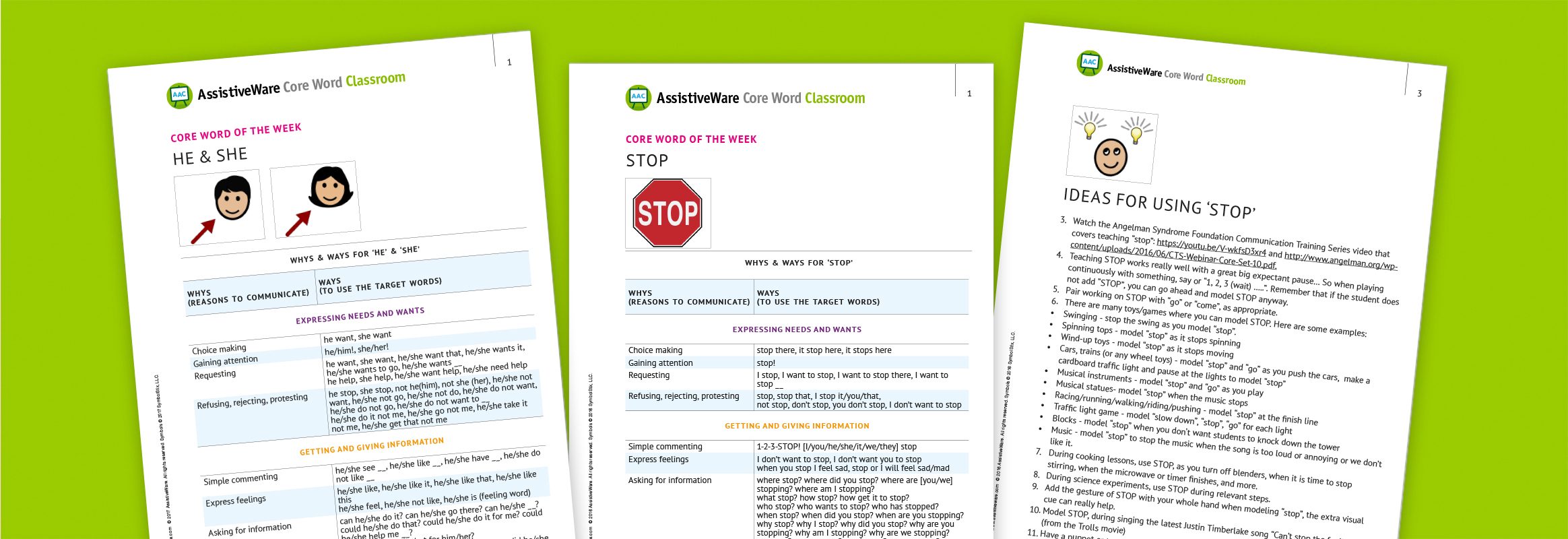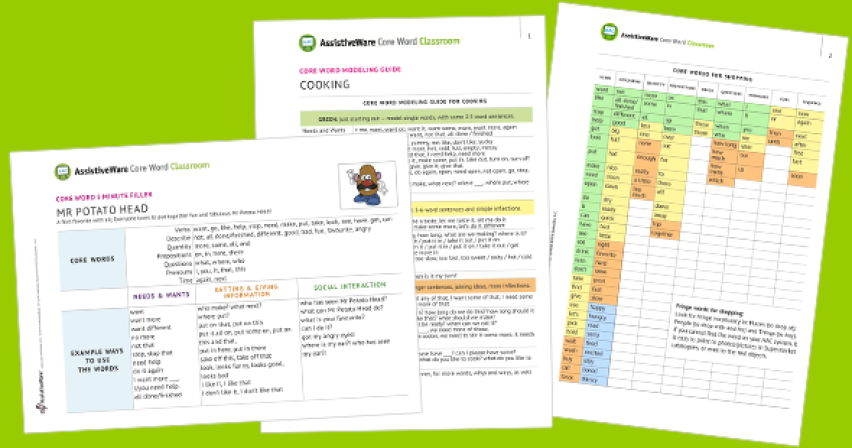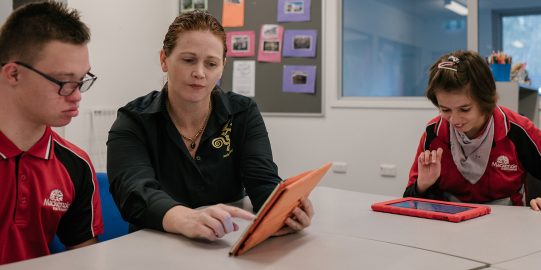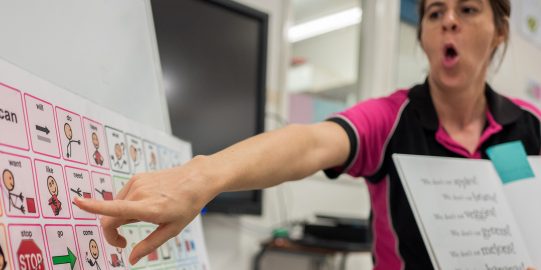Picture this: you’ve just started with core words in your school. Your colleagues are open to the new approach, but wary. Perhaps they’re very used to working with PECS and picture-based choice making, or perhaps they’re not convinced that their students are “ready” for AAC yet. You decide to start where your colleagues are, and ease them into core words by using a Word of the Week (WOW) approach. You pick one or two core words to focus on each week – perhaps “more” and “all done” the first week, “stop” and “go” the next week.
Slowly but surely your colleagues start to get it. They’re modeling, noticing their students are responding and able to communicate in ways they’ve never been able to before. There are challenges. Sometimes the decision is made to repeat words for 2-3 weeks, or use a single word rather than a contrasting pair. And sometimes teachers forget to use words from past weeks as well as the current word(s). But by the end of the year, all your teachers, aides, and therapists are excited about using the core words of the week approach and committed to following through for the next school year. And your students have been taught 20-30 core words and are reliably using about half of them expressively. Success!
A new year, but the same old words
The next school year begins… and the same core words that were targeted last year are planned again! Classroom staff tell you “we’ve got new students that don’t know the words from last year”, “the students forgot over the summer”, “they haven’t mastered last year’s words yet”, “we always repeat the curriculum units each year”. While these are all reasonable points, you realize that at this rate, your students may graduate from your school only having been taught 20 - 30 core words, and only using 10 - 15 expressively. That’s a good start, but not enough to fully express yourself. And the older students or more advanced students are beyond bored with working on “more” and “all done” again and again.
What’s an AAC specialist to do? Your teachers love the clarity and simplicity of the word of the week method, but your students are getting short-changed!
Pros and cons of WOW
Words of the Week can be great for beginning AAC users - and for beginning AAC teachers! The most difficult thing about getting a core word initiative started in a classroom or a school is getting staff buy-in. Word of the Week helps with this - it provides a clear structure and set expectations for classroom staff. It’s easy to remember which words to focus on, because they’re the same all day long. The fact that these words are useful all day long helps teachers to understand the “reusability” of core words - they can apply to any activity. And beginning AAC users can better generalize the meaning of core words when the same words are taught across multiple activities.
But once you’ve gotten the ball rolling, you’ll need to up the ante so your students can learn to use a full and rich vocabulary. If you rely only on Words of the Week, the number of words targeted each year is just too small.
Taking the next step with PAW
Once you’ve got your team started on core words with the Core Word of the Week approach, and they’re comfortable with modeling the current word(s) of the week and the words of previous weeks, it’s time to move to Per Activity Words (PAW) and use Core Word Planners that are designed around activities. In this approach, you look at the activities in the school day and figure out which core words will be useful in each activity. This gives your students exposure to more core words than if you just stick to a Word of the Week approach.
Per Activity Words does have its disadvantages - mostly for teachers. It can be a bit more challenging to remember the words to target, as they may change for each activity. Since you’re targeting more words, you’ll need to have greater fluency with the location of these words on the students’ systems. And Per Activity Words does require a bit more planning. But it’s all worth it to give your students the words they will need to express themselves!
The AssistiveWare Core Word Classroom can help you meet the challenges of Per Activity Words. You’ll need to create a plan for each activity - and we have pre-made planners and tools to help you make your own plans!
Pre-Made Planners
- Core Word Planners give you detailed suggestions for the Words, Whys, and Ways to target for a wide variety of classroom and daily living activities, along with extension activities and ideas for literacy instruction.
- Core Word Modeling Guides are quick one-page summaries of each Core Word Planner that you can use for on-the-go ideas during the activity.
- 5 Minute Fillers are quick and fun activities to bring core words into non-academic parts of the school day.






